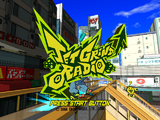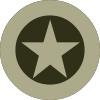|
|
| Line 13: |
Line 13: |
| | </td> | | </td> |
| | <td class="news" style="width:46%; margin-left: 2px; vertical-align:top;"> | | <td class="news" style="width:46%; margin-left: 2px; vertical-align:top;"> |
| − | ===On This Day, {{CURRENTMONTHNAME}} {{CURRENTDAY}}...==={{#vardefine:thumbsize|160px}} | + | ===On This Day, {{CURRENTMONTHNAME}} {{CURRENTDAY}}...=== |
| − | {{#switch: {{CURRENTMONTH}}-{{CURRENTDAY2}}
| + | {{OnThisDay}} |
| − | | 01-22 = *'''2013:''' Sega buys [[Relic Entertainment]] for a reported 26.6 million USD. Relic was up for auction along with multiple studios and franchises, following the bankruptcy of [[THQ]].
| |
| − | | 01-23 = *'''2013:''' [[The Cave]], made by [[Double Fine Productions]], is released in Europe & the United States on [[Xbox Live Arcade]] and on Steam for [[PC]]. Published by [[Sega]], the title is the first official Sega release for the [[Linux]] operating system.
| |
| − | | 01-25 = *'''2005:''' Sega sells its stake in [[Visual Concepts]] to [[Take Two Interactive]].
| |
| − | | 01-26 = *'''1989:''' The [[Mega Adaptor]] was released in Japan, allowing the [[Sega Mega Drive]] to run [[Sega Master System]] software.
| |
| − | | 01-31 = *'''2001:''' Sega announces that it will cease production of the [[Sega Dreamcast]], consequently bringing its home console business to a close.
| |
| − | | |
| − | | 02-04 = *'''1989:''' The last officially licensed [[Sega Master System]] game was released in Japan; ''[[Bomber Raid]]''.
| |
| − | | 02-19 = *'''2003:''' [[Sega]] announced a merger with [[Sammy]].
| |
| − | | 02-24 = *'''2002:''' ''[[NHL 2K2]]'' was released, becoming the last officially licensed [[Sega Dreamcast]] game in North America.
| |
| − | *'''2004:''' ''[[Puyo Pop Fever]]'' was released on the [[Sega Dreamcast]] in Japan. It was both the last Dreamcast game to be made by [[Sega]] and the last game the company made for one of their own home consoles, ending a 21 year run.
| |
| − | | |
| − | | 03-08 = *'''2007:''' ''[[Karous]]'', the last officially licensed [[Sega Dreamcast]] game, was released in Japan eight and a half years after the console's debut. However, many more unofficial games would follow.
| |
| − | | 03-10 = *'''1994:''' The [[Sega Mega Jet]] was brought to retail in Japan for ¥15,000.
| |
| − | | 03-22 = *'''1996:''' The last officially licensed [[Sega Mega Drive]] game was released in Japan; ''[[Madou Monogatari I]]''.
| |
| − | | 03-29 = *'''1991:''' ''[[Shining in the Darkness]]'' was released in Japan, launching one of Sega's largest franchises.
| |
| − | | |
| − | | 04-01 = *'''1992:''' The first variant of the [[Wondermega]] was released in Japan; the [[Victor]] RG-M1, retailing at ¥82,800.
| |
| − | *'''1995:''' The [[Arcade Racer Joystick|Racing Controller]] debuted in Japan for the [[Sega Saturn]].
| |
| − | *'''2010:''' [[Sega Retro]] was opened - we're {{#expr: {{CURRENTYEAR}} - 2010}} today!
| |
| − | *'''{{CURRENTYEAR}}:''' You died in horrible circumstances.
| |
| − | | 04-02 = *'''1993:''' The [[Sega Mega-CD]] officially goes on sale in the United Kingdom, retailing at a pricey £269.99. Bundled games include ''[[Sega Classics Arcade Collection]]'' and a compilation containing ''[[Sol-Feace]]'' and ''[[Cobra Command]]''.
| |
| − | | 04-12 = *'''2002:''' ''[[Evil Twin: Cyprien's Chronicles]]'' was released, becoming the last officially licensed [[Sega Dreamcast]] game in Europe.
| |
| − | | 04-23 = [[File:Sega Mega Drive HAA-2502 A.jpg|right|{{#var:thumbsize}}]]
| |
| − | *'''1993:''' The redesigned [[Sega Mega Drive|Sega Mega Drive 2]] (pictured) and [[Sega Mega-CD|Sega Mega-CD 2]] were released in Japan for ¥12,800 and ¥29,800, respectively.
| |
| − | | 04-30 = *'''1993:''' Sega settles its infamous ''[[Sega v. Accolade]]'' lawsuit, which helped to establish protection for makers of unlicensed games, and would result in Sega gaining [[Accolade]] as an official publisher.
| |
| − | | |
| − | | 05-03 = *'''1969:''' [[Gulf+Western]] purchased [[Sega]], though the Sega brand was retained.
| |
| − | | 05-11 = *'''1995:''' The [[Sega Saturn]] saw a surprise early release in North America, four months ahead of schedule. The move surprised consumers and retailers alike and led to a drought of Saturn software for the first six months of the system's lifespan.
| |
| − | | 05-31 = *'''1991:''' The [[Sega Teradrive]] was launched in Japan in three varieties ranging from ¥148,000 to ¥248,000.
| |
| − | | |
| − | | 06-17 = *'''2011:''' [[Sega]] created the United Kingdom-based [[Hardlight]] studio, with a focus on mobile gaming.
| |
| − | | 06-23 = *'''1991:''' [[Sega]]'s flagship product, ''[[Sonic the Hedgehog (16-bit)|Sonic the Hedgehog]]'' was released to western audiences.
| |
| − | | 06-26 = *'''1993:''' The [[Sega Pico]] was launched in Japan for ¥16,000. Support for the system would continue for twelve years.
| |
| − | | |
| − | | 07-05 = *'''1996:''' '''[[NiGHTS into Dreams]]'' debuted in Japan for the [[Sega Saturn]] alongside the [[3D Control Pad]].
| |
| − | | 07-08 = *'''1995:''' The [[Sega Saturn]] was launched in Europe ahead of schedule.
| |
| − | | 07-15 = *'''1983:''' [[Sega]] launched its first video game console, the [[SG-1000]] in Japan, the same day as the Nintendo Famicom hit store shelves.
| |
| − | | 07-17 = *'''1987:''' ''[[After Burner]]'' is released in Japanese arcades. ''[[After Burner II]]'', the iconic international release, would soon follow.
| |
| − | | 07-20 = *'''1994:''' The first [[Joypolis]] amusement park opened in Yokohama, Japan.
| |
| − | | 07-31 = *'''1998:''' After three-and-a-half years of service, the [[Sega Channel]] stopped broadcasting in the United States.
| |
| − | | |
| − | | 08-05 = *'''1997:''' [[Sega]] released the first [[NetLink]]-compatible [[Sega Saturn]] games; tweaked versions of ''[[Sega Rally Championship]]'' and ''[[Cyber Troopers Virtual-On]]'', giving the console online multiplayer.
| |
| − | *'''2005:''' The [[Advanced Pico Beena]] was launched in Japan, succeeding the [[Sega Pico]].
| |
| − | | 08-14 = *'''1989:''' The [[Sega Mega Drive]], rebranded Sega Genesis, launches in North America alongside its port of ''[[Altered Beast]]''. It would only be available in New York and Los Angeles at this time - the rest of the region would have to wait until mid-September.
| |
| − | | 08-28 = *'''2003:''' The first three games in the [[Sega Ages 2500]] series are released for the [[PlayStation 2]] in Japan; ''[[Sega Ages 2500 Series Vol. 1: Phantasy Star Generation: 1|Phantasy Star Generation: 1]]'', ''[[Sega Ages 2500 Series Vol. 2: Monaco GP|Monaco GP]]'' and ''[[Sega Ages 2500 Series Vol. 3: Fantasy Zone|Fantasy Zone]]''. The series would last for over five years and span thirty-three different volumes.
| |
| − | | |
| − | | 09-02 = *'''1995:''' "Saturnday", a much hyped release date for the Sega Saturn in North America... before the launch was pushed forward four months.
| |
| − | | 09-04 = *'''1989:''' [[Tectoy]] released the [[Sega Master System]] in Brazil. The console would become one of the most popular systems in the country's history.
| |
| − | | 09-07 = *'''1996:''' [[SegaWorld London]] opened to the general public.
| |
| − | | 09-09 = *'''1999:''' The [[Sega Dreamcast]] was launched in North America, almost ten months after the Japanese release.
| |
| − | | 09-10 = *'''2000:''' The [[SegaNet]] service was launched in North America for the [[Sega Dreamcast]].
| |
| − | | 09-13 = *'''1993:''' "Mortal Monday", the North American and European release of the original ''[[Mortal Kombat]]'' for the [[Sega Mega Drive]], [[Sega Master System]] and [[Sega Game Gear]].
| |
| − | | 09-27 = *'''1996:''' ''[[Sakura Taisen]]'' debuted for the [[Sega Saturn]] in Japan, becoming one of the country's top adventure game franchises.
| |
| − | | 09-29 = *'''1995:''' The [[Sega Mission Stick|Analog Mission Stick]] debuted in Japan for the [[Sega Saturn]].
| |
| − | | 09-30 = *'''1997:''' [[Sega]] bought a significant minority share in [[Visual Concepts]], who would go on to produce a wide variety of sports games for the company until their sale to [[Take Two Interactive]] in 2005.
| |
| − | | |
| − | | 10-06 = [[File:Sega Game Gear HGG-3200 A.jpg|right|{{#var:thumbsize}}]]
| |
| − | *'''1990:''' The [[Sega Game Gear]] (pictured) launched in Japan for ¥19,800. Launch titles include ''[[Columns]]'', ''[[Pengo]]'' and ''[[Super Monaco GP]]''.
| |
| − | | 10-14 = *'''1999:''' The [[Sega Dreamcast]] was finally launched in Europe, having been delayed since September.
| |
| − | | 10-15 = *'''1992:''' The [[Sega Mega-CD]], rebranded Sega CD launched in North America.
| |
| − | | 10-18 = *'''1987:''' [[Sega]] released the redesigned [[Sega Master System]] in Japan, effectively replacing the [[Sega Mark III]].
| |
| − | | 10-20 = *'''1985:''' [[Sega]] launched the [[Sega Mark III]] in Japan.
| |
| − | | 10-29 = *'''1988:''' The [[Sega Mega Drive]] launched in Japan for ¥21,000 with a choice of two games; ''[[Space Harrier II]]'' and ''[[Super Thunder Blade]]''.
| |
| − | | 10-30 = *'''1999:''' The [[Sega Dreamcast]] was launched Australia.
| |
| − | | |
| − | | 11-01 = *'''2000:''' [[Sega]]'s official name changes from "Sega Enterprises, Ltd." to "Sega Corporation".
| |
| − | | 11-17 = *'''2011:''' [[Sega]] acquired [[Three Rings Design]].
| |
| − | | 11-21 = [[File:32x console US Box Front.jpg|right|{{#var:thumbsize}}]]
| |
| − | *'''1994:''' The [[Sega 32X]] (pictured) was launched in North America.
| |
| − | | 11-22 = *'''1994:''' The [[Sega Saturn]] was launched in Japan.
| |
| − | | 11-24 = *'''1992:''' "Sonic 2sday", marking the western release of ''[[Sonic the Hedgehog 2]]''.
| |
| − | | 11-27 = *'''1998:''' The [[Sega Dreamcast]] was launched in Japan.
| |
| − | | 12-03 = [[File:32x console jp box front.jpg|right|{{#var:thumbsize}}]]
| |
| − | *'''1994:''' The [[Sega 32X]] (pictured) was launched in Japan for ¥16,800, on the same day as Sony's PlayStation and shortly after the [[Sega Saturn]].
| |
| − | | 12-04 = [[File:32x console eu box front.jpg|right|{{#var:thumbsize}}]]
| |
| − | *'''1994:''' Having seen a last minute delay, the [[Sega 32X]] (pictured) was launched in Europe.
| |
| − | | 12-07 = *'''2000:''' The last officially licensed [[Sega Saturn]] game was released in Japan; ''[[Yuukyuu Gensoukyoku Hozonban Perpetual Collection]]'', more than two years since the launch of the console's successor, the [[Sega Dreamcast]].
| |
| − | | 12-12 = *'''1991:''' The [[Sega Mega-CD]] launched in Japan for ¥49,800.
| |
| − | | 12-20 = [[File:PhantasyStar SMS JP cover.jpg|right|{{#var:thumbsize}}]]
| |
| − | *'''1987:''' ''[[Phantasy Star]]'' was released in Japan. It would go on to become Sega's flagship RPG series.
| |
| − | | 12-29 = *'''1995:''' The first game in the Sega Rally series, ''[[Sega Rally Championship]]'', was released in Japan on the [[Sega Saturn]], marking the first time the series was playable outside an arcade.
| |
| − | | |
| − | | #default=(No major Sega-related events occurred on this day.)
| |
| − | }} | |
| | <!-- borked rss code | | <!-- borked rss code |
| | <rss>http://forums.sonicretro.org/index.php?act=rssout&id=2|charset=UTF-8|short|date|max=12</rss> | | <rss>http://forums.sonicretro.org/index.php?act=rssout&id=2|charset=UTF-8|short|date|max=12</rss> |






